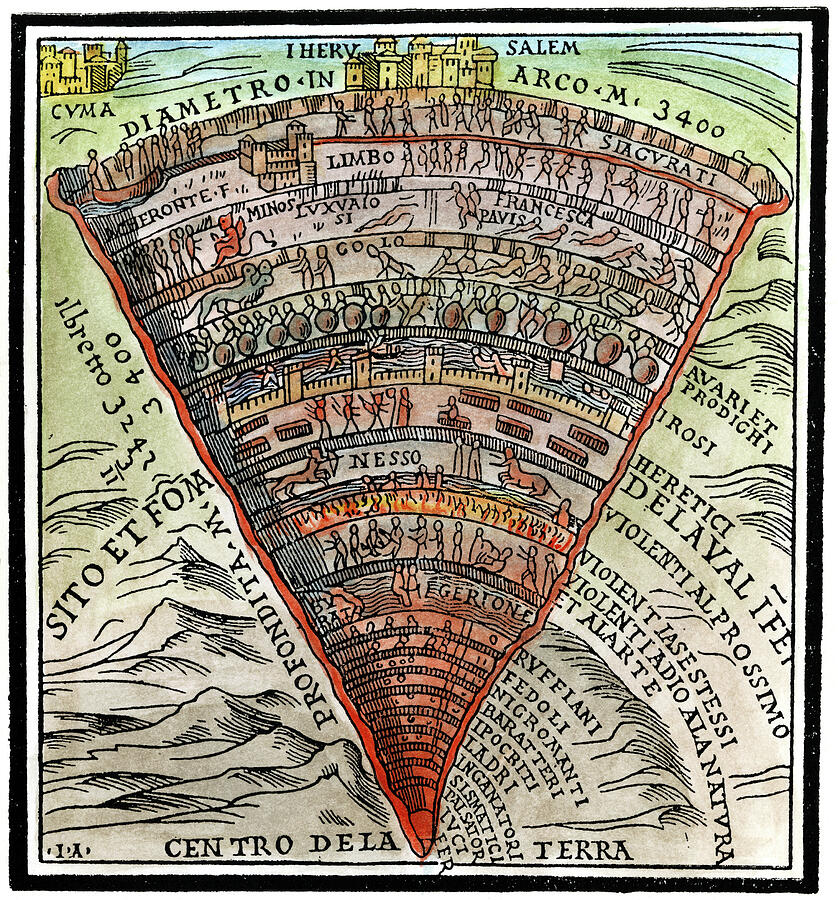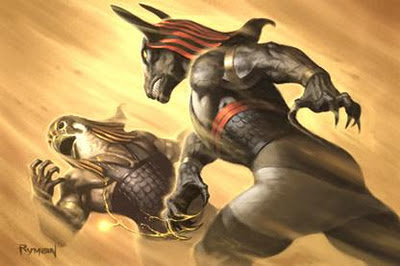In ancient Egypt there was a fair bit of jealousy. The odd thing is a lot of it was in the family? Isis was jealous of Ra. Set was jealous of Osiris. These gods would not be content to be gods alone; they thirsted for more power.
Isis was a tricky one; very sharp in the mind. In Ra's old age, she sought to steal some of his power. As the ancient Ra spoke in his old age, some spittle fell from his mouth to the ground. Quickly, Isis gathered some of the spittle and formed it into a powerful serpent. She knew of Ra's plans to travel through a certain path, and placed the serpent along the path. In Ra's old age and poor sight, he traveled happily. The last thing he thought of was his own descendant, Isis, trying to leach some of his power through a snake derived from his own spit. Eventually he stumbled upon the serpent and it struck him with a powerful bite. He sat there writhing in pain and called out to the gods and goddesses. Many came to his aid, including Isis. She offered her assistance, but required that Ra reveal his secret name of power to her. He tried to get out of it, but he eventually relented because the pain was too strong. After she learned his secret name she became much more powerful as she had planned.
Ra eventually died of his old age and Osiris claimed the throne. Under Osiris rule the people were very happy. He made fair laws, and he treated the people well. You could say things in Egypt were running very smoothly until Set decided he wanted to come screw everything up. Osiris usually had Isis by his side as she was his wife - I'm just going to avoid the fact that they were also brother and sister. Isis was very skilled at thwarting the threats from Set. One day she was not around, and there was a big feast in which Set brought a large chest that caught the eye of everyone at the party. Many people were interested in the chest, and Set proclaimed whoever fit into it best could have it. One by one the people tried getting in it, and eventually it was Osiris' turn to try it. He fit perfectly, and as soon as he got in, Set and his minions trapped him inside and quickly carried him to the Nile river. They sat the chest in the river and assumed they would never see Osiris again.
When Isis returned she was distraught. She couldn't believe what had happened. She eventually tracked down the casket and returned it to Egypt. Set caught wind of this and "set" out in search of the casket and Osiris' body. He found it, and he proceeded to chop Osiris into bits and throw him back into the river.
In the end it turns out that Osiris and Isis had a child - again please just forget that they were brother and sister. Their child, Horus, was trained to defeat Set. He eventually grew up and defeated Set in battle to avenge his father.
**Author's Note**: At first I sought to really change the story up quite a bit, but after writing a few lines I thought I would just write an easier to read summary for those who didn't read this passage this week. The story line is very, very similar to the original. I added a few funny lines and a bit of brevity to some of the topics that went on a bit longer than I had hoped while reading it. I look forward to the comments on this story, and if you have any questions please let me know!
Egyptian Myth and Legend by Donald Mackenzie

























